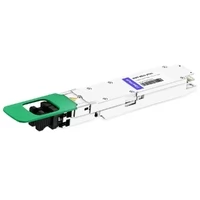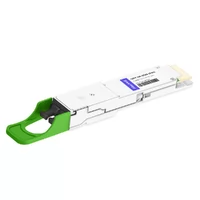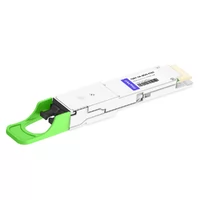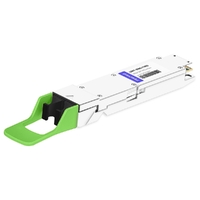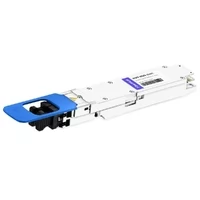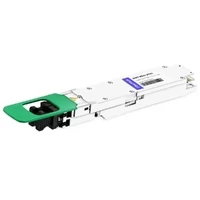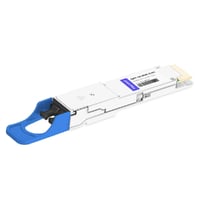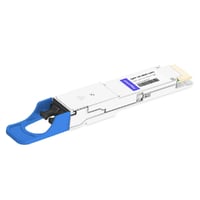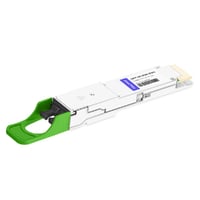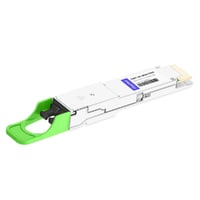The application scenarios of 800G optical transceiver are mainly divided into SR (100m), DF/FR/LR (500m/2km/10km) and ER/ZR (40km/80km). The connection distance from the top-of-rack switch (TOR) to the Leaf switch is short. Large Internet companies generally adopt 100G speed connection technology and gradually upgrade to 200G/400G starting in 2021 and some companies use 800G technology in 2023.
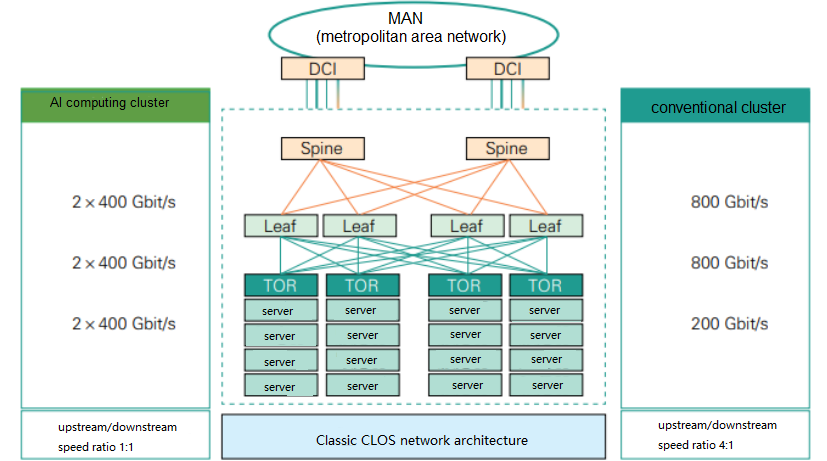
AI computing cluster and conventional cluster
The connection distance between Leaf and Spine switches will reach 2km or even 10km. Data center interconnection is generally a load balancing or disaster recovery backup connection between several adjacent data centers. The distance of this connection may be as long as dozens of kilometers. It mainly uses dense wavelength division multiplexing and coherent communication to reuse fiber optic resources as much as possible.
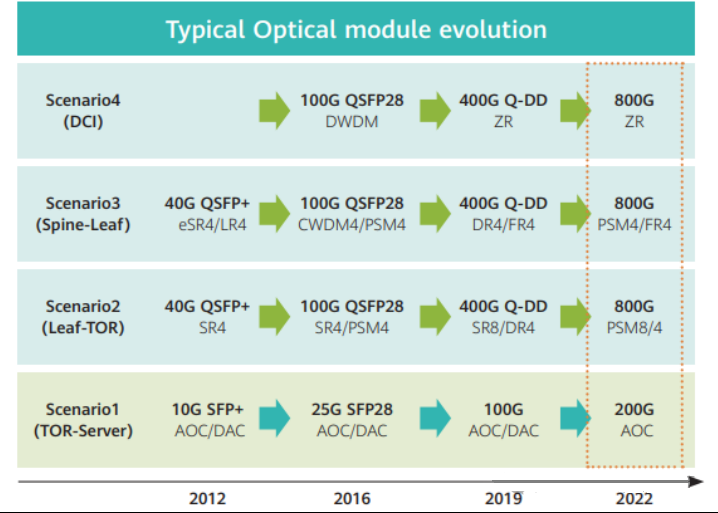
Typical optical module evolution
The evolution of 800G technology solutions includes three generations. The first generation is with 8x100G optical interface and 8x100G electrical interface, commercially available in 2021; The second generation is with 4x200G optical interface and 8x100G electrical interface. The commercial time is expected to be 2024; The third generation is with 4x200G optical interface and 4x200G electrical interface. It is expected to be commercially available in 2026. Single channel 200G optoelectronic chip devices and equalization technology are currently immature.
In terms of electrical interfaces, when the single-channel rate is the same as that of the optical interface, the architecture of optical transceiver will reach its optimal state and have the advantages of low power consumption and low cost. The single-channel 100G electrical interface will be the ideal electrical interface for the 8x100G optical transceiver, and the single-channel 200G electrical interface will be the ideal electrical interface for the 4x200G optical transceiver. In terms of packaging, 800G optical transceiver may come in different forms such as QSFP-DD800 and OSFP.
There are three main types of optical interface architectures of 800G optical transceiver, namely 8x100G PAM4, 4x200G PAM4 and 800G coherent optical modules. 8x100G PAM4 optical transceiver. The PAM4 transceiver operates at 53 Gbd and uses 8 pairs of digital-to-analog converters (DAC) and analog-to-digital converters (ADC), 8 lasers, 8 pairs of optical transceivers, and 1 pair of 8-channel coarse wavelength division multiplexers (CWDM). 4x200G PAM4. The PAM4 transceiver operates at 106Gbd and uses 4 pairs of DACs and ADCs, 4 pairs of optical transceivers (including 4 lasers), and 1 pair of 4-channel CWDM. 800G coherent optical module. It uses 4 pairs of DACs and ADCs, 1 laser and 1 pair of optical transceivers and fixed wavelength lasers can be used in data center coherent optical modules to reduce cost and power consumption.

3 types of optical interface architectures of 800G optical transceiver
The 8x100G direct modulation and direct inspection solution can make use of the existing technical architecture with relatively mature technologies and standards and a relatively complete supply chain. In the SR scenario, VCSEL 100G technology faces challenges. It will become key factors in the continued evolution of this technology to improving the performance of multimode solutions and reducing the cost of multimode fibers. Single mode technologies represented by silicon photonics (SiPh) and directly modulated lasers (DML) have developed rapidly. SiPh technology is developing more rapidly and is expected to compete with multi-mode solutions in application scenarios with transmission distances of 100 m and below in the future. In the DR/FR scenario, there are three solutions: EML, DML and SiPh. In the LR scenario, there are 800G LR8 solutions based on CWDM, LWDM and nLWDM.
In the 4x200G direct modulation and direct detection solution, single channel 200G continues to use the PAM4 modulation code type and can take advantage of the relatively mature conditions of PAM4 industry. In 4x200G DR and FR application scenarios, there are currently two technical solutions: 4-way single mode parallel (PSM4) and CWDM4, which still face many challenges. For LR application scenarios, there are 800G LR4 solutions based on CWDM, LWDM and nLWDM, but this solution requires high-bandwidth optoelectronic chip devices, stronger equalization technology, and forward error correction (FEC) to ensure corrected bit error rates (BER), which poses high technical challenges.
Technical solutions in the 800G SR scenario include DML/EML-based and SiPh-based solutions. The 800G SR8 DML/EML solution uses 8x100G DSP, DML/EML optical chip with the same wavelength, uses 8 optical fibers at both the sending and receiving ends (PSM8), and uses 24-core or 16-core MPO connectors. The 800G SR8 SiPh solution uses 8xSiPh MZ modulator/continuous fiber laser (silicon light is used as the transmitter, while the modulator and light source are separated), which can realize a parallel multi-channel shared light source architecture. If the insertion loss is properly controlled, using 1-2 light sources to achieve 8 channels in parallel can give the system a good cost advantage.
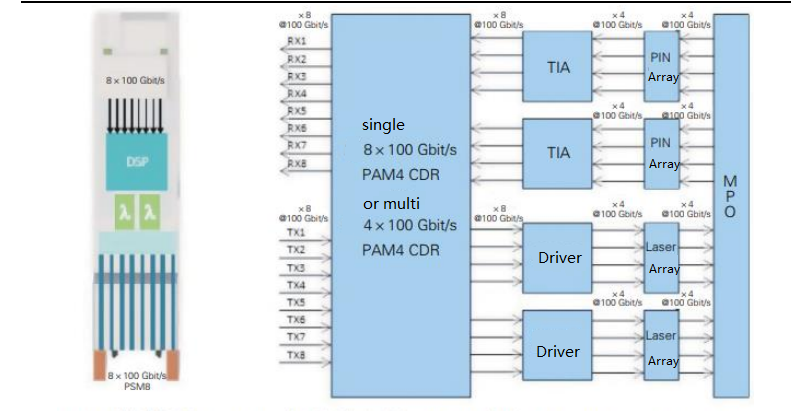
800G SR solution: 8×100G SR8 DML/EML
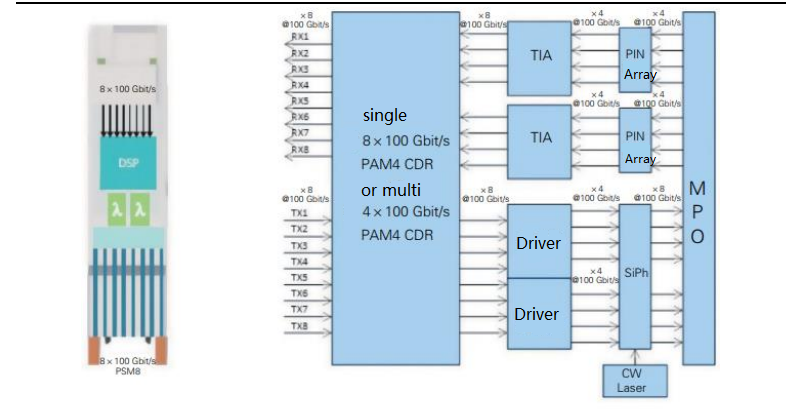
800G SR technology solution: 8×100G PSM8 SiPh
In the 800G DR/FR scenario, the 4x200G solution has a lower cost advantage. The 800G DR4 (EML/SiPh) solution uses 4x200G DSP. The optical chip uses 4xEML/SiPh, with the same wavelength. Due to limited bandwidth development, the solution does not use DML. The receiving and sending end each uses 4 optical fibers (PSM4), all of which are of the same wavelength, and use 12-core MPO connectors. The 800G 2km (FR) solution uses single-channel 200G PAM4 technology. When the rate increases from 100G to 200G, the baud rate will double and the sensitivity will deteriorate by about 3dB. Therefore, a more powerful FEC is required to maintain a high receiver sensitivity (-5dBm).
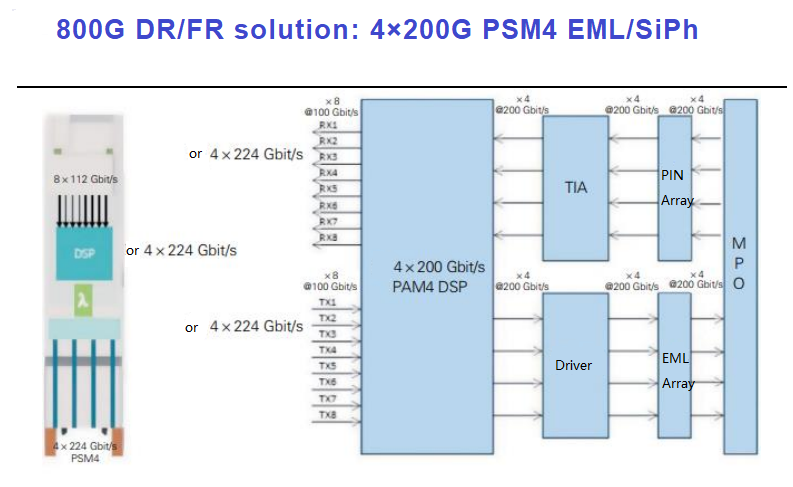
800G DR/FR solution: 4×200G PSM4 EML/SiPh
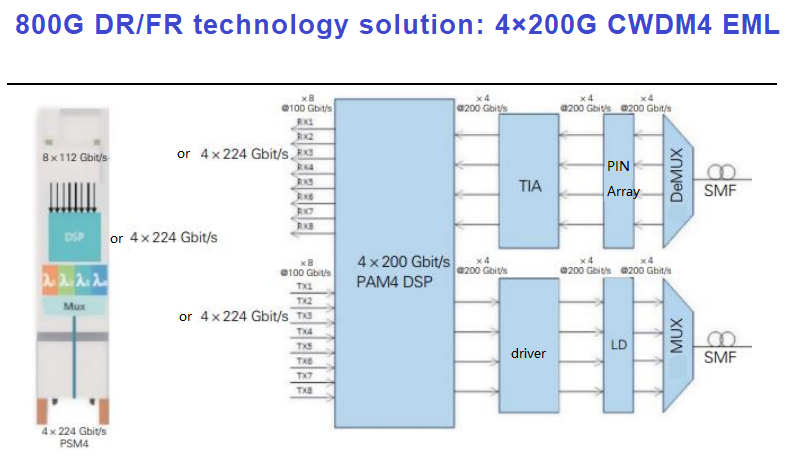
800G DR/FR technology solution: 4×200G CWDM4 EML
The development trends of 800G include single mode sinking, single wavelength 200G and coherent sinking. single mode sinking Limited by the bandwidth of multimode fiber, the transmission distance of 100G PAM4 VCSEL+ multimode fiber is 50 m. The sinking of single mode optical interface solutions is a development trend, which will help optical transceiver of the 800G SiPh solution cover massive 100 m SR scenarios. Single wave 200G is coming. Although 112 Gbd EML technology is developing rapidly, the bandwidth resources of 55 GHz are slightly insufficient. The application prospects of 200G PAM4 SiPh modulators and silicon-based thin film lithium niobate are very broad. Coherent sinking. As the transmission rate increases, the coherent technology solution will further expand its application to shorter distances such as 40, 20, and 10 km based on the 80 km transmission distance. The coherent solution requires only a laser, modulator and receiver, making it cost-competitive with PAM4.
Table of Contents
ToggleRelated Products:
-
 NVIDIA MMS4X50-NM Compatible OSFP 2x400G FR4 PAM4 1310nm 2km DOM Dual Duplex LC SMF Optical Transceiver Module
$1200.00
NVIDIA MMS4X50-NM Compatible OSFP 2x400G FR4 PAM4 1310nm 2km DOM Dual Duplex LC SMF Optical Transceiver Module
$1200.00
-
 NVIDIA MMS4X00-NM-FLT Compatible 800G Twin-port OSFP 2x400G Flat Top PAM4 1310nm 500m DOM Dual MTP/MPO-12 SMF Optical Transceiver Module
$1199.00
NVIDIA MMS4X00-NM-FLT Compatible 800G Twin-port OSFP 2x400G Flat Top PAM4 1310nm 500m DOM Dual MTP/MPO-12 SMF Optical Transceiver Module
$1199.00
-
 NVIDIA MMA4Z00-NS-FLT Compatible 800Gb/s Twin-port OSFP 2x400G SR8 PAM4 850nm 100m DOM Dual MPO-12 MMF Optical Transceiver Module
$650.00
NVIDIA MMA4Z00-NS-FLT Compatible 800Gb/s Twin-port OSFP 2x400G SR8 PAM4 850nm 100m DOM Dual MPO-12 MMF Optical Transceiver Module
$650.00
-
 NVIDIA MMS4X00-NM Compatible 800Gb/s Twin-port OSFP 2x400G PAM4 1310nm 500m DOM Dual MTP/MPO-12 SMF Optical Transceiver Module
$900.00
NVIDIA MMS4X00-NM Compatible 800Gb/s Twin-port OSFP 2x400G PAM4 1310nm 500m DOM Dual MTP/MPO-12 SMF Optical Transceiver Module
$900.00
-
 NVIDIA MMA4Z00-NS Compatible 800Gb/s Twin-port OSFP 2x400G SR8 PAM4 850nm 100m DOM Dual MPO-12 MMF Optical Transceiver Module
$650.00
NVIDIA MMA4Z00-NS Compatible 800Gb/s Twin-port OSFP 2x400G SR8 PAM4 850nm 100m DOM Dual MPO-12 MMF Optical Transceiver Module
$650.00
-
 Cisco QDD-2X400G-FR4 Compatible QSFP-DD 2x400G FR4 PAM4 CWDM4 2km DOM Dual duplex LC SMF Optical Transceiver Module
$1800.00
Cisco QDD-2X400G-FR4 Compatible QSFP-DD 2x400G FR4 PAM4 CWDM4 2km DOM Dual duplex LC SMF Optical Transceiver Module
$1800.00
-
 Cisco QDD-8X100G-FR Compatible QSFP-DD 8x100G FR/DR8+ PAM4 1310nm 2km DOM Dual MPO-12 SMF Optical Transceiver Module
$1450.00
Cisco QDD-8X100G-FR Compatible QSFP-DD 8x100G FR/DR8+ PAM4 1310nm 2km DOM Dual MPO-12 SMF Optical Transceiver Module
$1450.00
-
 Arista OSFP-800G-2XDR4 Compatible OSFP 8x100G FR PAM4 1310nm Dual MPO-12 2km SMF Optical Transceiver Module
$1100.00
Arista OSFP-800G-2XDR4 Compatible OSFP 8x100G FR PAM4 1310nm Dual MPO-12 2km SMF Optical Transceiver Module
$1100.00
-
 Arista OSFP-800G-2LR4 Compatible OSFP 2x400G LR4 PAM4 CWDM4 Dual duplex LC 10km SMF Optical Transceiver Module
$2000.00
Arista OSFP-800G-2LR4 Compatible OSFP 2x400G LR4 PAM4 CWDM4 Dual duplex LC 10km SMF Optical Transceiver Module
$2000.00
-
 Arista OSFP-800G-2FR4 Compatible OSFP 2x400G FR4 PAM4 1310nm 2km DOM Dual Duplex LC SMF Optical Transceiver Module
$1200.00
Arista OSFP-800G-2FR4 Compatible OSFP 2x400G FR4 PAM4 1310nm 2km DOM Dual Duplex LC SMF Optical Transceiver Module
$1200.00
-
 Arista QDD-800G-2LR4 Compatible QSFP-DD 2x400G LR4 PAM4 CWDM4 10km Dual duplex LC SMF FEC Optical Transceiver Module
$2000.00
Arista QDD-800G-2LR4 Compatible QSFP-DD 2x400G LR4 PAM4 CWDM4 10km Dual duplex LC SMF FEC Optical Transceiver Module
$2000.00
-
 Arista QDD-800G-2PLR4 Compatible QSFP-DD 8x100G LR PAM4 1310nm 10km Dual MPO-12 SMF FEC Optical Transceiver Module
$1550.00
Arista QDD-800G-2PLR4 Compatible QSFP-DD 8x100G LR PAM4 1310nm 10km Dual MPO-12 SMF FEC Optical Transceiver Module
$1550.00
-
 Arista QDD-800G-2FR4 Compatible QSFP-DD 2x400G FR4 PAM4 CWDM4 2km DOM Dual duplex LC SMF Optical Transceiver Module
$1800.00
Arista QDD-800G-2FR4 Compatible QSFP-DD 2x400G FR4 PAM4 CWDM4 2km DOM Dual duplex LC SMF Optical Transceiver Module
$1800.00
-
 Arista QDD-800G-2XDR4 Compatible QSFP-DD 8x100G FR/DR8+ PAM4 1310nm 2km DOM Dual MPO-12 SMF Optical Transceiver Module
$1450.00
Arista QDD-800G-2XDR4 Compatible QSFP-DD 8x100G FR/DR8+ PAM4 1310nm 2km DOM Dual MPO-12 SMF Optical Transceiver Module
$1450.00

